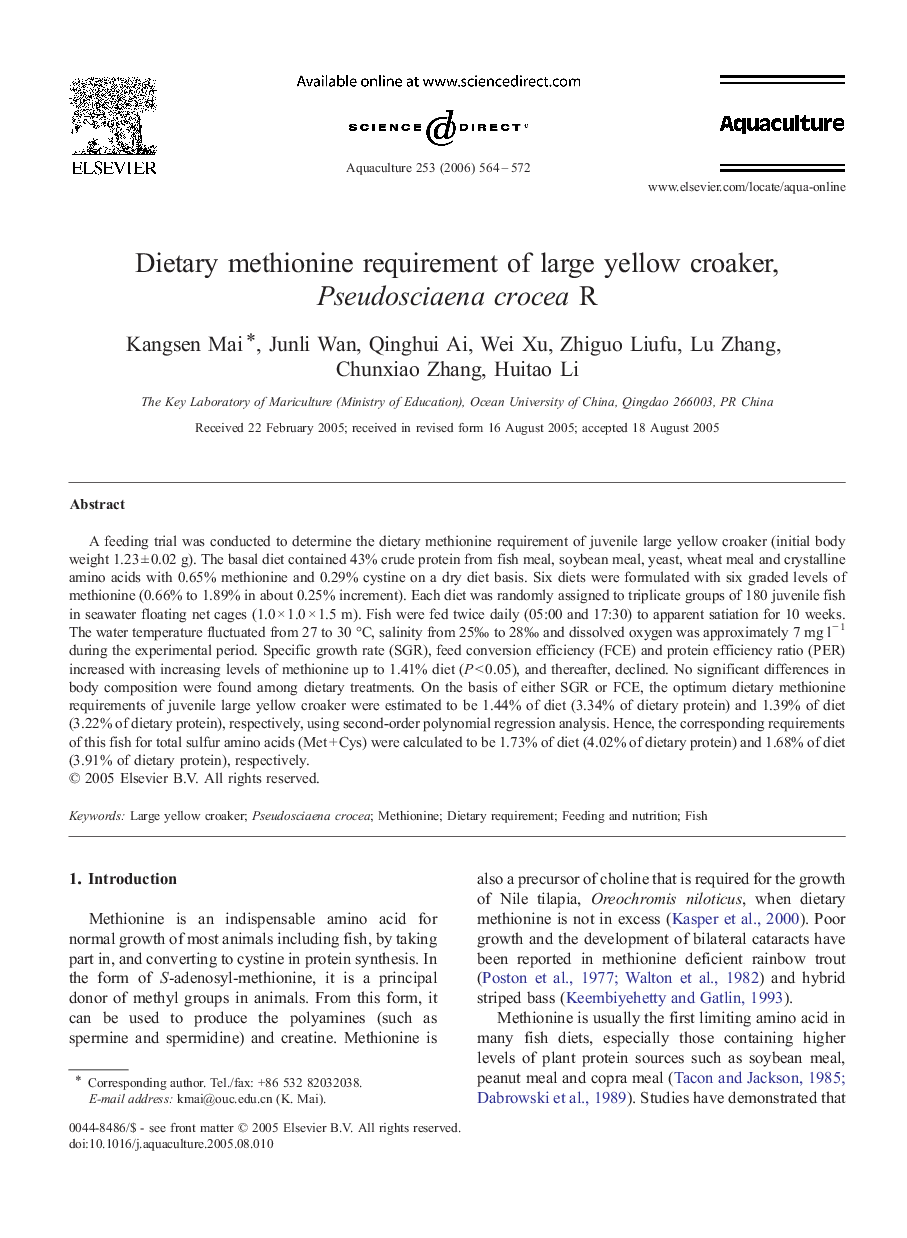| Article ID | Journal | Published Year | Pages | File Type |
|---|---|---|---|---|
| 2426262 | Aquaculture | 2006 | 9 Pages |
A feeding trial was conducted to determine the dietary methionine requirement of juvenile large yellow croaker (initial body weight 1.23 ± 0.02 g). The basal diet contained 43% crude protein from fish meal, soybean meal, yeast, wheat meal and crystalline amino acids with 0.65% methionine and 0.29% cystine on a dry diet basis. Six diets were formulated with six graded levels of methionine (0.66% to 1.89% in about 0.25% increment). Each diet was randomly assigned to triplicate groups of 180 juvenile fish in seawater floating net cages (1.0 × 1.0 × 1.5 m). Fish were fed twice daily (05:00 and 17:30) to apparent satiation for 10 weeks. The water temperature fluctuated from 27 to 30 °C, salinity from 25‰ to 28‰ and dissolved oxygen was approximately 7 mg l− 1 during the experimental period. Specific growth rate (SGR), feed conversion efficiency (FCE) and protein efficiency ratio (PER) increased with increasing levels of methionine up to 1.41% diet (P < 0.05), and thereafter, declined. No significant differences in body composition were found among dietary treatments. On the basis of either SGR or FCE, the optimum dietary methionine requirements of juvenile large yellow croaker were estimated to be 1.44% of diet (3.34% of dietary protein) and 1.39% of diet (3.22% of dietary protein), respectively, using second-order polynomial regression analysis. Hence, the corresponding requirements of this fish for total sulfur amino acids (Met + Cys) were calculated to be 1.73% of diet (4.02% of dietary protein) and 1.68% of diet (3.91% of dietary protein), respectively.
